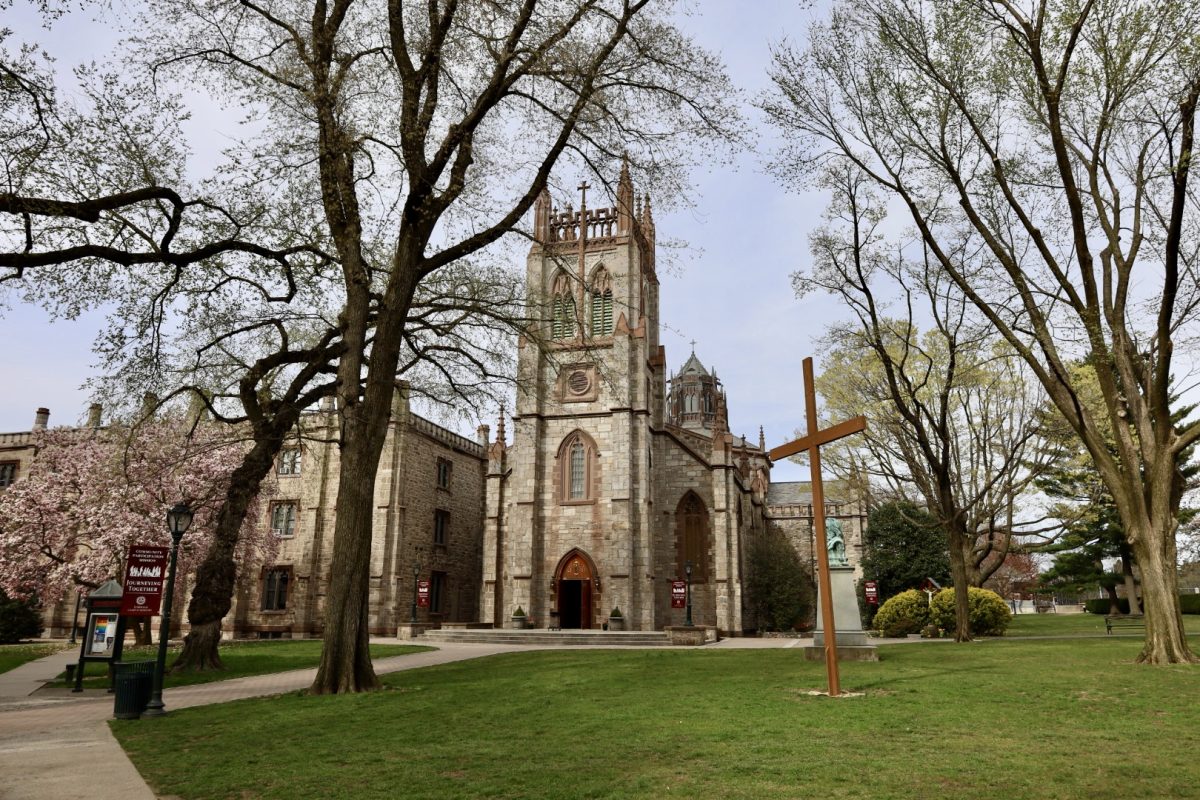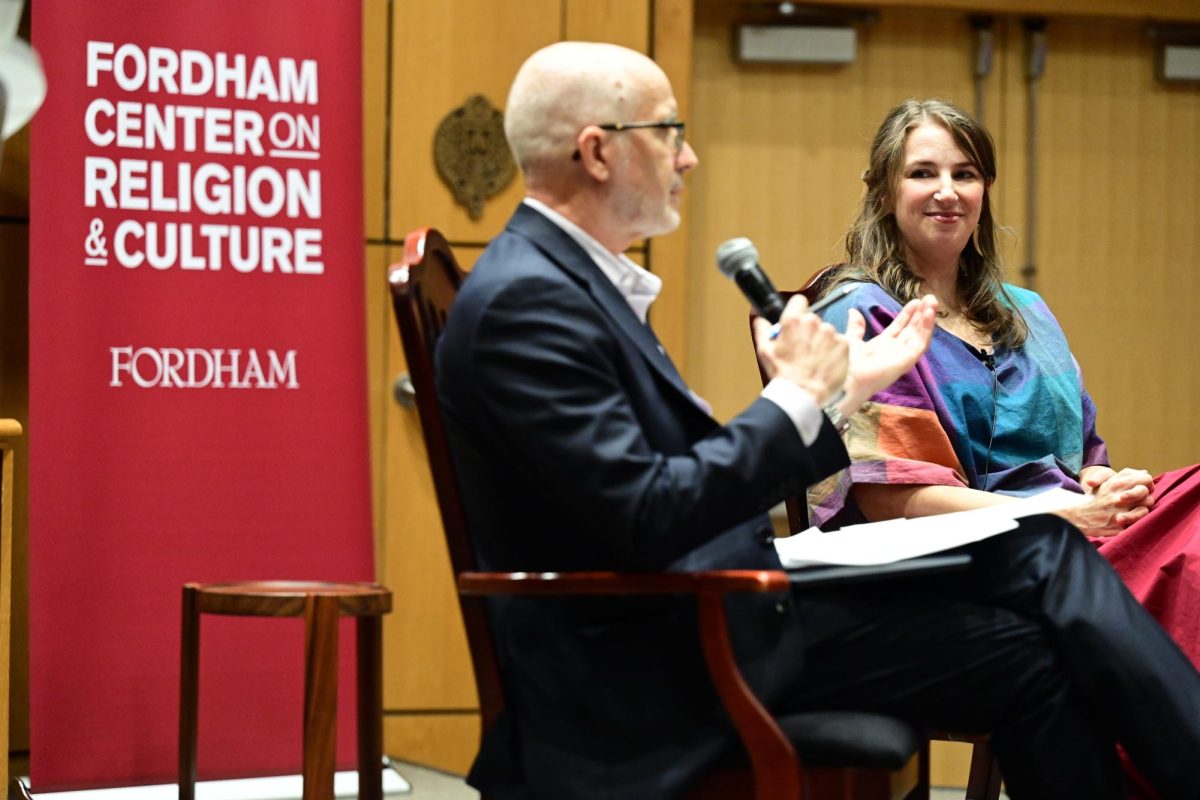By KATIE MEYER & GIRISH SWAMINATH
NEWS EDITOR AND STAFF WRITER

Sitting quietly in one of the St. Barnabas Hospital’s many waiting rooms, amid the usual bustle of a hospital in full swing, 73-year-old Gustavo waited patiently for his turn to get blood drawn.
Clad in a dark gray jacket and a black knit cap pulled low over his stubbly face, the South American immigrant was not bothered by the delay, even though he knew it might be a while before he could see a doctor. “Probably a lot of people before me…so I think a half an hour or an hour,” he said.
In the years that Gustavo has been frequenting St. Barnabas, he has grown accustomed to waiting, as well as to most other aspects of St. Barnabas. Diagnosed with leukemia six years ago, he has made regular visits to the hospital ever since.
He was generally positive about his Barnabas experience, particularly on the normally-contentious subject of waiting, which he simply called “luck.”
However, he had racked up a few complaints during his six years of cancer treatment.
“What I found is that some people,” Gustavo said, “they want their service already done, and as soon as they can. They don’t want to anticipate what’s going to be the problem. They are not prepared, so they want, like, emergency care. Everything is emergency with them. So, that’s not when I’m happy.”
He was also slightly worried about the hospital’s handling of tests like MRIs.
“The only concern I got is the analysis, you know?” Gustavo said. “When you go see him, the doctor requests some kind of analysis…some kind of MRI, other tests; and then you’ve got to make an appointment…and that’s taking a little longer. One or two weeks to get the program.” He went on, “when you go to the doctor, you’re supposed to get your tests in a reasonable time. Two weeks or 10 days I consider too much.”
When it comes down to it, however, Gustavo has no inclination to leave St. Barnabas and seek his treatment at a different hospital.
“I don’t know much about hospitals, I don’t know much about the system, so it’s just a question of luck, just a question of luck,” he said. “If it’s a good hospital, and if you got good doctors that’s where it counts.”
Other hospital patrons have expressed similar, and often harsher views on care at St. Barnabas. Mayra, a mother of two who was sitting in a waiting room and translating for her Spanish-speaking uncle, said that care was generally “not good.”
Though she has had some positive experiences at St. Barnabas, especially in the prenatal and pediatrics departments (both of her children were delivered at St. Barnabas), a recent incident with her uncle has left a sour taste in her mouth.
After being severely bitten by a dog, her uncle went to the emergency room on his own and was then forced to wait for hours.
“The ER is pretty bad,” she said. “Very bad…the waiting can be ridiculous. He went [indicating her uncle next to her], he was able to walk in…but in order for them to do the procedure they had to do, our family had to actually get very upset and loud. He was there waiting for seven hours and no doctor would come. [He was] in pain, and he was constantly—he was bleeding out. It was just like, every hour bleeding and bleeding and they were just ignoring the situation. I don’t think they have enough doctors for the amount of patients that come in.”
When asked about her current wait time, she grimaced. “His appointment was at 9:30. It’s 11:15,” she said, adding that this kind of incident, even outside of the ER, was not a random occurrence, but the norm.
21-year-old Shannon also had a problem with the waiting times.
In her seventh month of pregnancy, her doctors’ appointments were becoming more frequent, and with them, so were her long waits. When asked about her opinion on prenatal care, she said, “They’re pretty good. They’re just slow. I’ve been here since 10 [a two-hour span]…I tried afternoons…slow. Mornings…slow.”
She had no other complaints to report; having gone to St. Barnabas for pediatric care for most of her life, she had become friendly with many of the doctors.
“They’re friendly, they smile,” she said. “They’re just slow. Just too slow for my liking.”
The lengthy waiting times in the St. Barnabas emergency room culminated in the death of John Verrier, a 30-year-old patient who passed away on Jan. 13 after waiting overnight for medical care, according to CBS News.
Reacting to the incident, a senior at Fordham, who wanted to remain anonymous, said that she was not shocked.
“It’s awful but I can’t say I’m surprised,” the student, who has volunteered at Barnabas in the past, said. “It’s not necessarily the fault of the medical staff, but patients get ignored for hours on end, especially when there’s an incoming trauma. An eight hour or longer wait without seeing a doctor or nurse is not uncommon. This is partially because you get such a high volume of patients who are there for medical reasons that need to be addressed by a primary care physician, but don’t have access to preventative care.”
While the student attributes the death to a large-scale problem, she insists that the St. Barnabas staff must remain accountable for their patients.
“I’m absolutely not saying that the staff at Barnabas needs to be let off the hook for accountability, but this is indicative of a larger problem with the way emergency healthcare in handled,” she said.
Mohammad Khan, FCRH ’14, another student who has volunteered with and conducted clinical observations at the emergency room at St. Barnabas, believes that limited staffing in the hospital has contributed to longer wait times.
“The extended wait times in the ER have been addressed by doctors and patients’ alike, which is said to be contributed to hospital understaffing,” Khan said. “Unfortunately, this led to the death of the young man, which should serve as a wake-up call to address this situation. The doctors try their best, but they cannot be held accountable for the hospital administration’s means of handling protocols.”
Based on his experiences at St. Barnabas, Khan states that the quality of care in the emergency room depends on the crowd of patients in the waiting room.
“After shadowing in the ER at St. Barnabas through my moral aspects of medicine class, I have noticed the quality of care is often dependent on how crowded the ER is on a given day,” Khan said. “People had come in with minor illnesses to lacerations and each would have to wait upwards of an hour or two to consult a doctor. The doctors I worked with there are accustomed to the fast-paced atmosphere, and it does not detract from the quality of care provided.”
The conditions at St. Barnabas are relevant to the lives of Fordham students, since St. Barnabas serves as the primary hospital for many during their time on campus.







































































































































































































